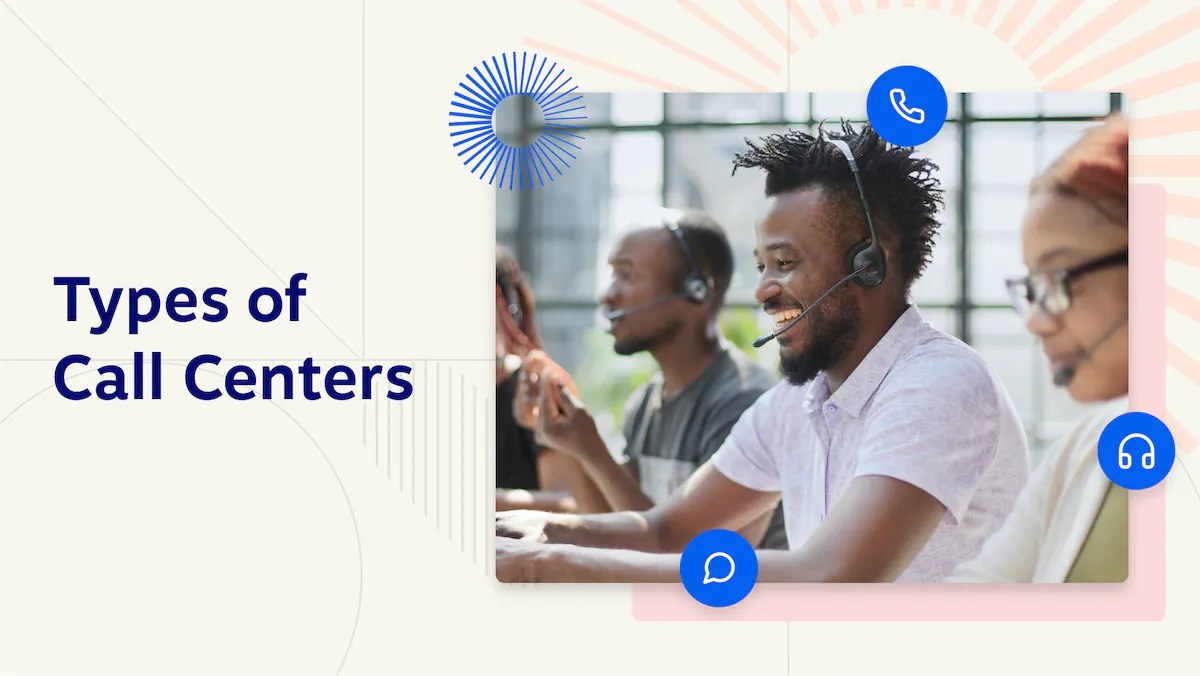Starting a call center operation is no easy task. You’ve got to find the right staff, the right technology, and, ultimately, the right type of call center.
On paper, it’s straightforward. You need a group of people with the right tools to serve your customers. So, you buy some phones and software, and away you go.
But, there are several types of call center software on the market to choose from — each designed to serve a particular type of customer in various ways.
Beyond staff and technology, this decision impacts everything from customer experience to operational efficiency. This article will cover the nine main types of call centers, empowering you to choose the one that best suits your business.
Evaluating contact centers? Get the buyer’s guide.
This guide reveals the five pillars of a modern platform, key questions to ask, and red flags to avoid.
What Is a Call Center?
A call center is a dedicated facility where agents handle customer interactions primarily over the phone. It involves specialized technology and software applications designed to efficiently manage inbound and outbound calls. Call centers ensure that customer inquiries are routed to appropriately skilled agents, and information about the calls is recorded for analysis and reporting.
Call centers provide consistent, efficient, and cost-effective customer service.
Call center software offers features like automatic call distribution, interactive voice response (IVR) systems, and intelligent call routing tailored to handle various customer transactions, such as processing orders, managing complaints, providing support, and upselling or cross-selling products.
You can integrate these applications with customer relationship management (CRM) systems to provide your customer service representatives with easy access to customer information and a smooth telecommunications experience.
While call centers focus primarily on voice interactions, a contact center is a more comprehensive customer service operation that handles customer interactions across multiple channels, including phone, email, chat, social media, and self-service portals.
Contact centers aim to provide a seamless, omnichannel customer experience, so customers can easily switch between different communication channels.
We’ll discuss both call and contact centers in this article.

Related: 101 Call Center Abbreviations, Acronyms, and Definitions
9 Types of Call Centers to Know
1) Inbound call center
An inbound call center focuses on handling incoming calls and transactions initiated by customers. This call center type banks on advanced call routing features like auto attendants, interactive voice response (IVR) systems, and call queues to ensure callers reach the most suitable agent quickly.
Call routing plays a critical role in both customer satisfaction and agent productivity.
Inbound call centers use features like automatic call distribution (ACD) and pre-configured call flows to efficiently distribute calls to available agents based on factors like skill set, language, and product knowledge.
Calls are answered promptly by the right person to solve the customer’s problem on the first try. Agents can then add notes about the call during the wrap-up time.
Who should choose an inbound call center?
Inbound call centers are ideal for businesses that:
- Experience a high volume of incoming calls: If your business receives a large number of customer inquiries by phone, an inbound call center can ensure efficient handling and minimize wait times.
- Prioritize customer support: For businesses where excellent customer service is paramount, an inbound call center allows you to provide prompt and personalized support to every customer.
- Need product or tech support: Inbound call centers can be equipped with agents trained to handle technical support or product-specific inquiries, ensuring customers receive accurate and timely assistance.
- Value customer feedback: Inbound calls can be a valuable source of customer feedback. An inbound call center can capture this data and use it to improve products, services, and overall customer experience.

2) Outbound call center
Outbound call centers specialize in initiating customer contact. Call center agents proactively reach out to potential customers through phone calls, as opposed to handling incoming inquiries.
Outbound call centers offer a powerful tool to connect with customers directly over the phone. They can be used for sales outreach, customer service, telemarketing, and market research.
Due to the focus on initiating contact, the skill set required for outbound agents often differs from those handling inbound calls. Outbound centers typically use dialer software to speed up the call-making process, and agents may need specialized training to use these tools effectively.
Who should choose an outbound call center?
Outbound call centers work best for businesses that:
- Prioritize sales and lead generation: If your business thrives on proactive customer acquisition, an outbound call center can help you reach a wider audience and generate qualified leads.
- Conduct market research: Outbound calls are a valuable tool for gathering customer insights and feedback to inform product development and marketing strategies.
- Value proactive customer service: Outbound calls can be used to welcome new customers, follow up on past purchases, and offer proactive support, enhancing the overall customer experience.
- Focus on customer retention: Engaging existing customers through outbound calls enables businesses to identify upselling opportunities and implement retention strategies to minimize customer churn.
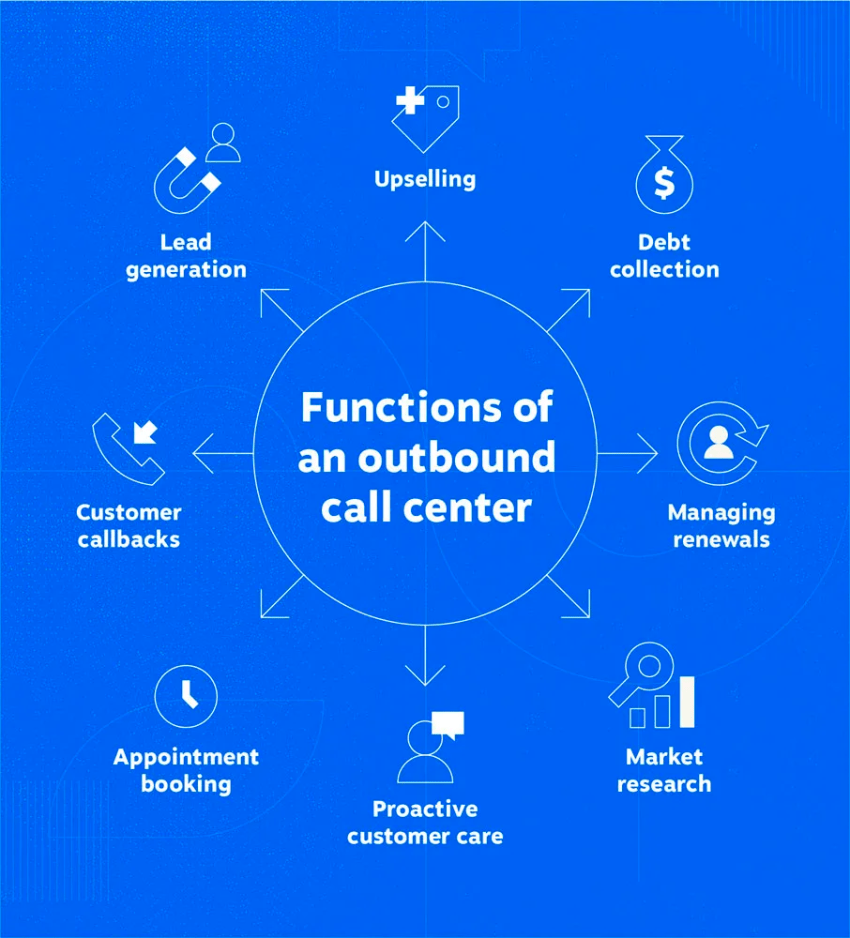
3) Blended call centers
A blended call center combines the functionalities of both inbound and outbound call centers, allowing agents to field both incoming customer inquiries and initiate outgoing calls. It offers a more integrated customer experience and better organizes agent workflows.
The flexibility of a blended call center translates into a more efficient operation and reduced costs for the business.
Customers benefit from having a single point of contact and potentially shorter wait times, while agents gain a more comprehensive view of customer interactions, leading to more personalized service and a better customer experience.
However, a blended call center isn’t for everyone. Managing both inbound and outbound activities within a single center requires a well-defined strategy, including scheduling, workload distribution, and performance metrics that cater to both types of interactions.
Agents need broader training to handle a wider range of interactions compared to inbound or outbound specialists. So choose carefully based on your business needs and the agents’ skill set.
Who should choose a blended call center?
Blended call centers are a good fit for businesses that:
- Experience fluctuating call volume: If your business experiences both high inbound call volumes and outbound campaign needs, a blended center can efficiently handle both types of interactions.
- Prioritize customer experience: For businesses where a seamless and personalized customer experience is necessary, a blended center allows agents to develop a better understanding of customer needs and provide consistent support.
- Seek operational efficiency: Companies looking to optimize agent utilization and streamline call-handling processes can benefit from the centralized approach of a blended call center.
4) Virtual call center
Forget physical locations — virtual call centers use cloud technology to empower geographically dispersed agents to work from anywhere with an internet connection. They eliminate the need for on-site hardware installation and offer businesses greater flexibility in staffing and operations.
Virtual call centers can handle inbound inquiries, outbound outreach, or a combination of both (blended call centers). The versatility makes them suitable for a wide range of customer interaction needs.
One of the biggest advantages of virtual call centers is the ability to tap into a global talent pool. Businesses can hire agents across different locations, languages, and time zones, enabling 24/7 customer service without the limitations of a physical location or outsourcing costs.
Who should choose a virtual call center?
Virtual call centers are meant for businesses that:
- Prioritize flexibility and scalability: The ability to scale your team up or down quickly based on demand and access a global talent pool makes virtual centers ideal for businesses with fluctuating call volumes or those seeking multilingual support.
- Value work-life balance: Embracing remote and hybrid work helps virtual call centers attract and retain top talent who value flexible work arrangements.
- Seek cost savings: Eliminating physical office space and related expenses can save operating costs.
- Operate globally: Virtual call centers are perfect for businesses with a global customer base or those looking to expand internationally. They enable 24/7 customer service without geographical limitations.
For instance, a travel company with a clientele spread worldwide can benefit greatly from a virtual call center. They can hire multilingual agents across different time zones to provide seamless customer support around the clock.
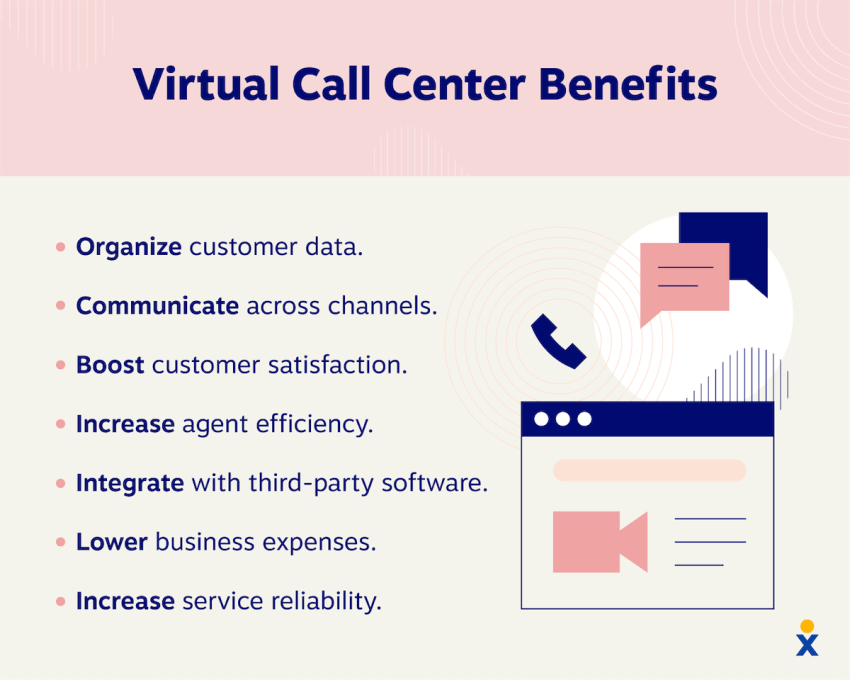
5) Multichannel call centers
Multichannel contact centers provide customer support through various channels, but each touchpoint operates somewhat independently. Agents handle inquiries through their assigned channel (e.g., phone calls) and may not have immediate access to interactions on other channels.
Customers can choose their preferred method of communication, avoiding phone queues and waiting on hold. Options like web chat allow them to multitask while interacting with support, like browsing product details and clarifying sizing information with an agent.
Channels like email, social media, and SMS introduce asynchronous communication, enable customers to initiate contact at their convenience, and don’t require immediate responses — ideal for situations where a customer needs time to gather information or formulate their questions.
Consider a retail scenario: A customer browsing clothes online might initiate a quick chat with a support agent to clarify sizing before adding items to their cart. Later, they might decide to email with additional questions about a specific product, picking up the conversation where they left off without needing to repeat themselves.
While multichannel offers convenience, it has limitations:
- Fragmented customer journey: Agents lack a complete view of customer interactions across channels, potentially leading to repetitive information gathering and a disjointed experience.
- Limited agent visibility: Agents cannot easily switch between channels or access a customer’s full history, hindering personalized service.
Multichannel is a good starting point for businesses offering basic customer support across multiple channels. It improves accessibility but may lack the personalization initiatives of omnichannel.
6) Omnichannel call centers
Omnichannel contact centers take a more integrated approach. They connect all customer communication channels into a single platform, so agents can seamlessly switch between channels and get a complete view of each customer’s interaction history.
Agents can access a customer’s entire history across all channels, enabling personalized service and faster resolution times.
A scenario where a bank customer initiates contact via social media with a security concern. An omnichannel agent can view the customer’s account information and seamlessly transfer them to a qualified security specialist via phone without requiring the customer to repeat their concerns.
Omnichannel routing assigns interactions to the most qualified agent regardless of channel, optimizing agent utilization and reducing wait times.
Omnichannel works best for businesses prioritizing a superior customer experience. It offers a better understanding of customer needs and empowers agents to deliver exceptional service.
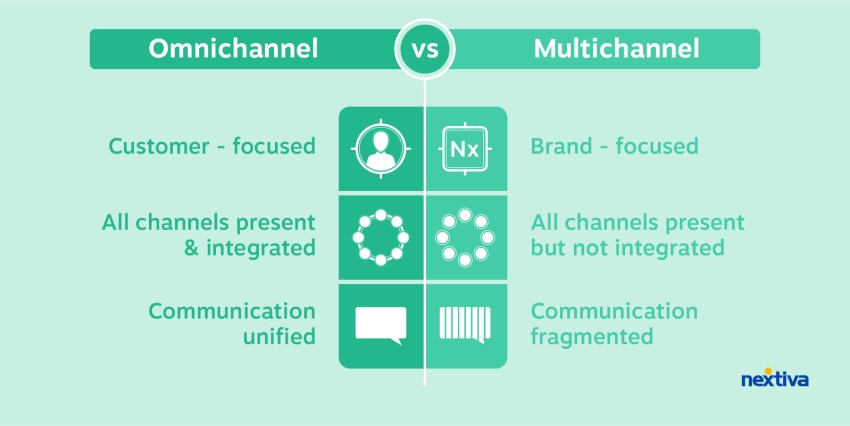
7) Automated call centers
Automated call centers integrate artificial intelligence into various aspects of call center operations, transforming the customer experience and agent productivity.
AI technologies like chatbots, natural language processing (NLP), and speech recognition help automate repetitive tasks, personalize interactions, and provide real-time support.
AI chatbots can handle basic inquiries, freeing up human agents for more complex customer issues. NLP allows for intelligent call routing, directing customers to the most suitable agent based on their needs.
AI can also analyze call data to identify areas for improvement and personalize future interactions.
Who should choose an automated call center?
Here’s who can opt for an automated call center:
- Businesses with high call volume: AI can efficiently handle routine inquiries, reducing wait times and improving customer satisfaction.
- Focus on personalization: AI can personalize interactions based on customer data, leading to a more positive experience.
- Data-driven decision making: AI analytics provide valuable insights into call center performance and customer behavior.
Automated call centers may not be suitable for every situation. Interactions requiring empathy, complex problem-solving, or building rapport may still be best handled by human agents. While you can automate parts of the process, automating the entire call center operation isn’t advisable.
That’s where AI-powered contact centers come in. These intelligent systems handle routine tasks like password resets, bookings, or appointment scheduling, freeing your agents to focus on what they do best: solving complex issues and building genuine customer connections.
The best part? You’re in control. AI-powered contact centers are customizable, allowing you to choose which tasks get automated, ensuring a smooth and efficient experience for both your agents and your customers.
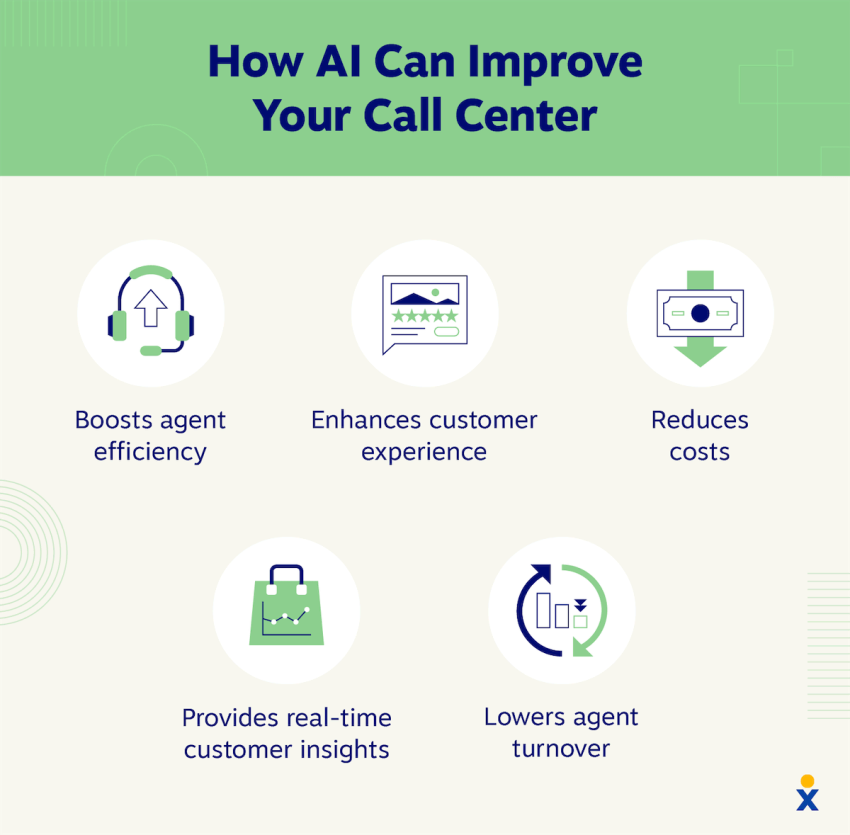
Where does your CX strategy stand with AI?
Take the AI Maturity assessment to get personalized recommendations on how to enhance your CX.
8) In-house & outsourced call center services
Need deep product knowledge and brand control? An in-house call center lets you train agents to handle complex issues and deliver consistent messaging. It also integrates seamlessly with other departments for smooth information sharing.
However, it requires a bigger investment in staffing, infrastructure, and technology.
Prioritize cost-effectiveness and scalability? Consider Business Process Outsourcing (BPO).
You’ll benefit from significant cost savings and expertise in specific industries or languages. Outsourced centers easily adjust their workforce to meet fluctuating call volumes.
However, you might have less control over brand representation and quality control.
Related: Call Center Outsourcing: A Go-To Resource for Outsourcing
9) Offshore call centers
Offshore call center providers are located in foreign countries with lower labor costs, offering businesses substantial cost savings on customer service.
If you’re a high call volume call center, offshore centers can help you handle large numbers of interactions efficiently. Companies seeking 24/7 support or multilingual capabilities can also benefit —strategic locations provide around-the-clock service and a diverse talent pool.
However, there are trade-offs.
Cultural differences, language barriers, and time zone challenges can impact customer experience. Robust data security protocols are also essential.
Carefully choosing and managing an offshore partner is key to success. Businesses should weigh cost savings against potential challenges to ensure this approach aligns with their goals.
How To Choose the Right Call Center for Your Business
We discussed the many call center options available, but how do you find the perfect fit for your company? Consider these factors:
- Business needs and goals: Understand your purpose (sales, service, support) and volume to guide choosing an inbound, outbound, blended, virtual, or automated call center with appropriate features.
- In-house vs. outsourced: In-house provides control but investment, while outsourced gives cost-effective talent/infrastructure access at reduced control. Onshore vs. offshore options impact costs.
- Location and language requirements: Evaluate cost vs local presence needs. Ensure multilingual capabilities for virtual/offshore models to serve your markets effectively.
- Inbound or outbound customer calls: Inbound call centers handle inquiries needing listening/problem-solving skills. Outbound for proactive outreach requiring persuasion. Blended combines both.
- Technology and infrastructure: Ensure integration with your tools. Consider AI for automation, omnichannel for a unified experience, robust analytics, and functionalities like IVR and ACD.
- Agent skill requirements: Align skills — technical knowledge for support, empathy for service, persuasion for sales. Virtual/offshore allows tapping wider talent pools.
- Cost and budget considerations: Compare upfront/ongoing costs and pricing of different call centers. Factor in technology and equipment costs and ROI from better service, sales, and retention.
Get a Flexible Call Center Platform With Nextiva
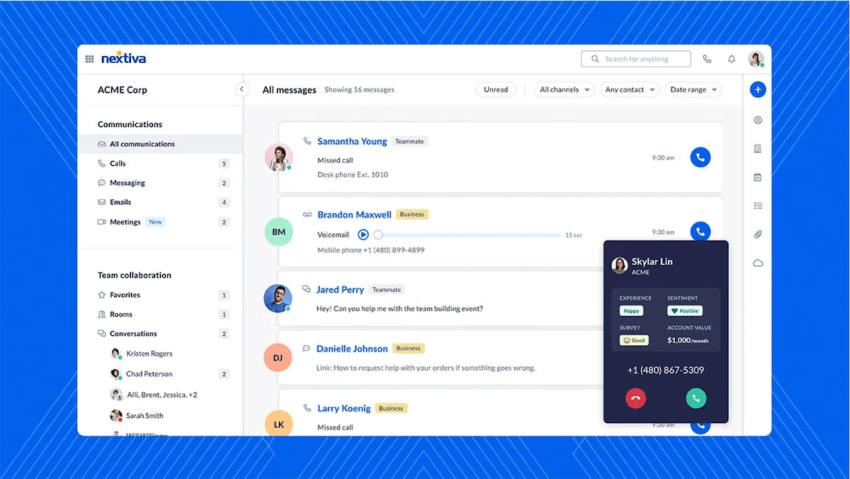
When planning a new call center, you will need to consider all the different types of calls and scenarios. Finding the right call center solution to suit your business needs is paramount.
Failure to offer the right channels and track the right metrics could lead to unhappy customers and high churn. But what you need when you are starting out may differ from your requirements when you’re scaling in a year’s time.
Finding the right balance requires a call center solution that’s as adaptable as your business.
Nextiva’s virtual call center offers all these features:
- IVR
- Automation
- Call recording
- VoIP numbers
- Call routing
- Advanced reporting
- CRM integration
- Multichannel
- Omnichannel
- Workforce management
With Nextiva, you can automate omnichannel customer support, provide self-service options, set up a basic inbound call center, or enable your outbound sales team.
Whatever you need, whenever you need it, our contact center solution flexes with you.
Related: How to Choose the Best Call Center Service Provider for Your Business
Know which type of call center you need? Set up a virtual call center with Nextiva.👇
The call center solution teams love.
Sales and support teams use Nextiva to deliver a better customer experience.

















 Customer Experience
Customer Experience 

